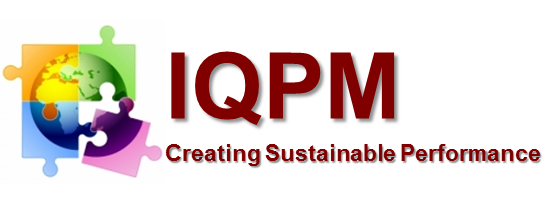
Insights: Problem Solving
IQPM Consulting has defined some standard of problem solving for clients, so that clients leadership can effectively direct others in the search and resolution of issues.
The four basic problem solving steps are:
1. Define the problem
Diagnose the situation so that your focus is on the problem, not just its symptoms. Helpful techniques at this stage include using flowcharts to identify the expected steps of a process and cause-and-effect diagrams to define and analyze root causes.
The chart below identifies key steps for defining problems. These steps support the involvement of interested parties, the use of factual information, comparison of expectations to reality and a focus on root causes of a problem. What's needed is to:
- Review and document how processes currently work (who does what, with what information, using what tools, communicating with what organizations and individuals, in what time frame, using what format, etc).
- Evaluate the possible impact of new tools and revised policies in the development of a model of "what should be."
2. Generate alternative solutions
Postpone the selection of one solution until several alternatives have been proposed. Having a standard with which to compare the characteristics of the final solution is not the same as defining the desired result. A standard allows us to evaluate the different intended results offered by alternatives. When you try to build toward desired results, it's very difficult to collect good information about the process.
Considering multiple alternatives can significantly enhance the value of your final solution. Once the team or individual has decided the "what should be" model, this target standard becomes the basis for developing a road map for investigating alternatives. Brainstorming and team problem-solving techniques are both useful tools in this stage of problem solving.
Many alternative solutions should be generated before evaluating any of them. A common mistake in problem solving is that alternatives are evaluated as they are proposed, so the first acceptable solution is chosen, even if it's not the best fit. If we focus on trying to get the results we want, we miss the potential for learning something new that will allow for real improvement.
3. Evaluate and select an alternative
Skilled problem solvers use a series of considerations when selecting the best alternative. They consider the extent to which:
- A particular alternative will solve the problem without causing other unanticipated problems.
- All the individuals involved will accept the alternative.
- Implementation of the alternative is likely.
- The alternative fits within the organizational constraints.
4. Implement and follow up on the solution
Leaders may be called upon to order the solution to be implemented by others, "sell" the solution to others or facilitate the implementation by involving the efforts of others. The most effective approach, by far, has been to involve others in the implementation as a way of minimizing resistance to subsequent changes.
Feedback channels must be built into the implementation of the solution, to produce continuous monitoring and testing of actual events against expectations. Problem solving, and the techniques used to derive elucidation, can only be effective in an organization if the solution remains in place and is updated to respond to future changes.
